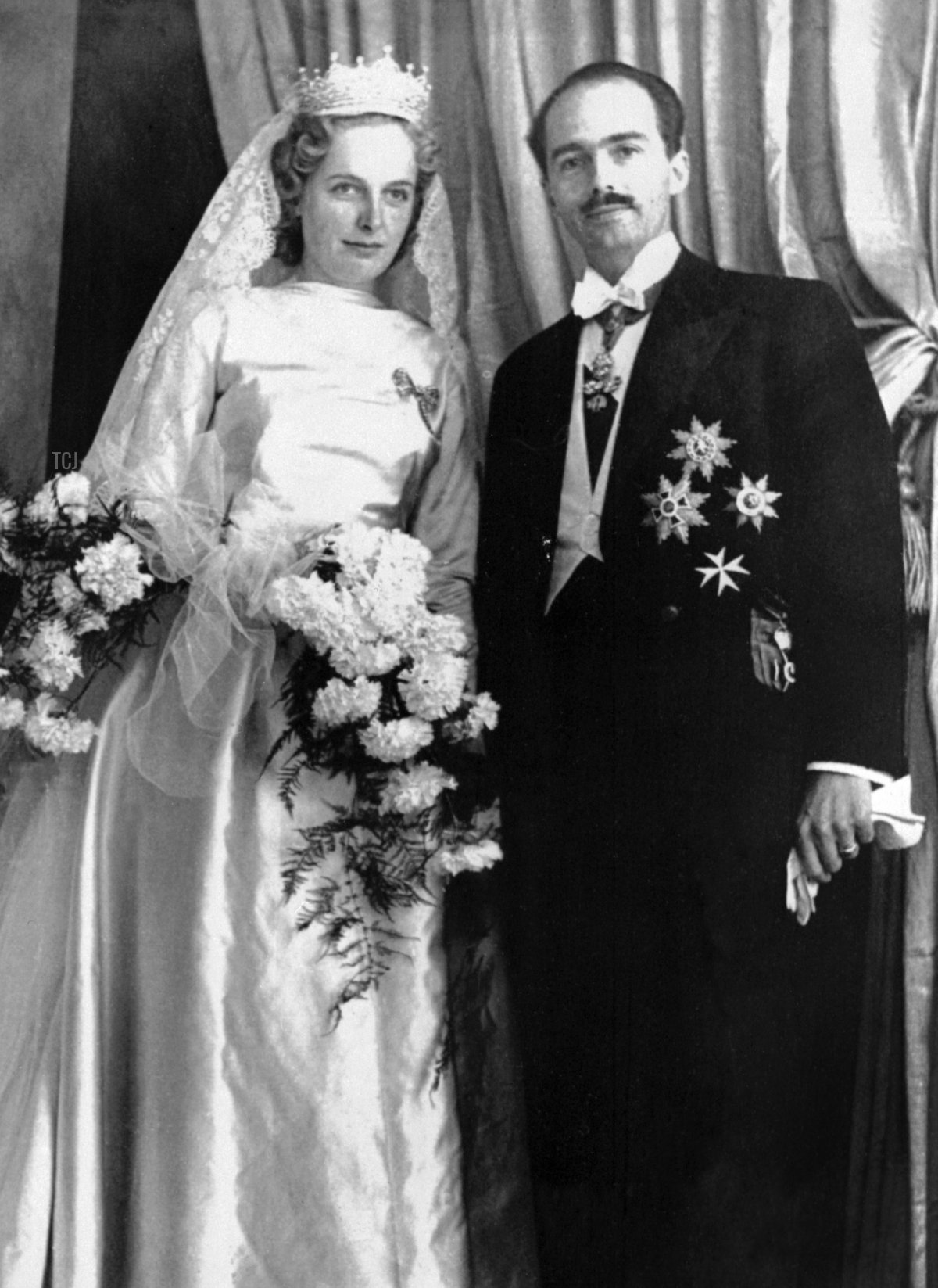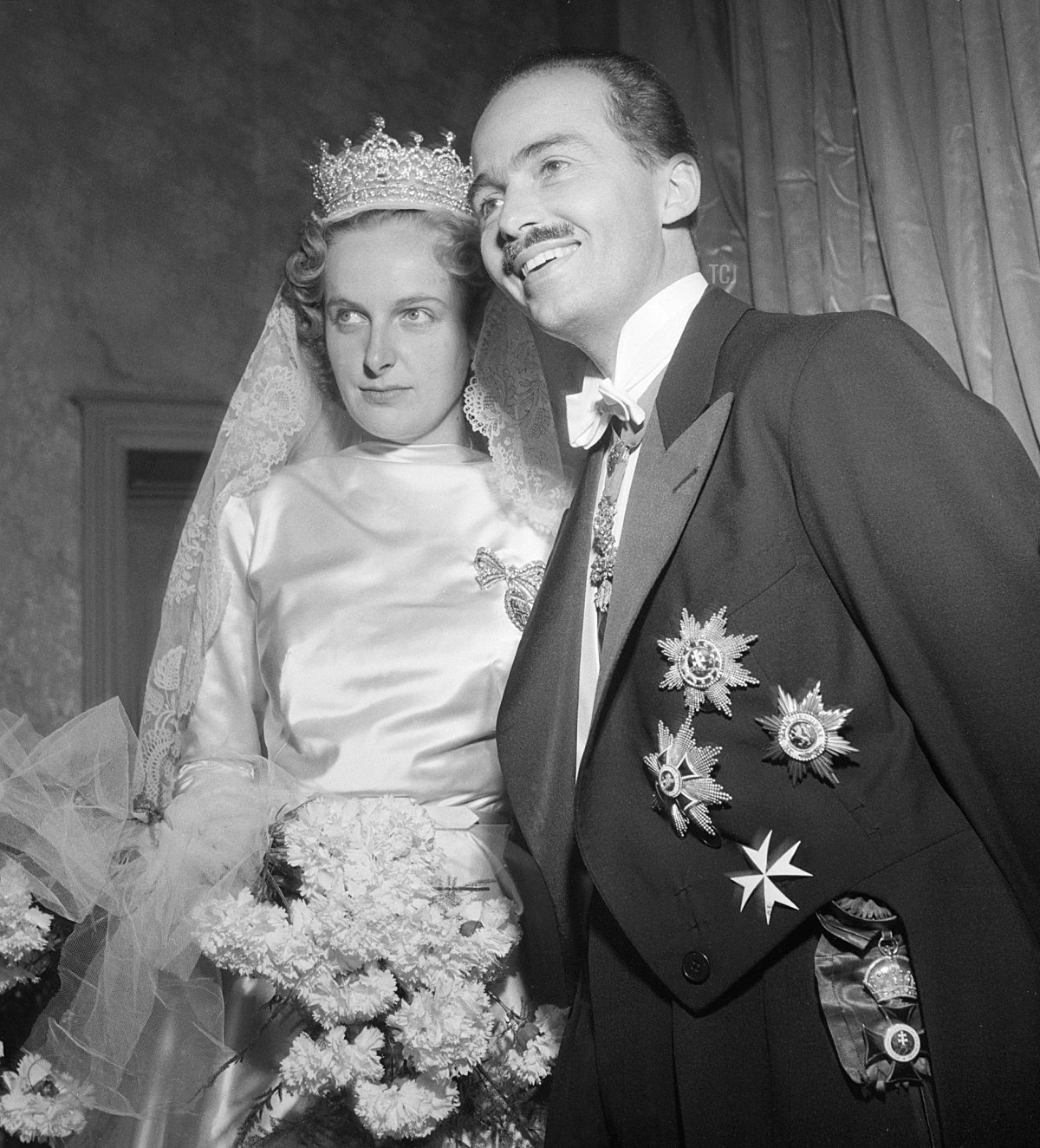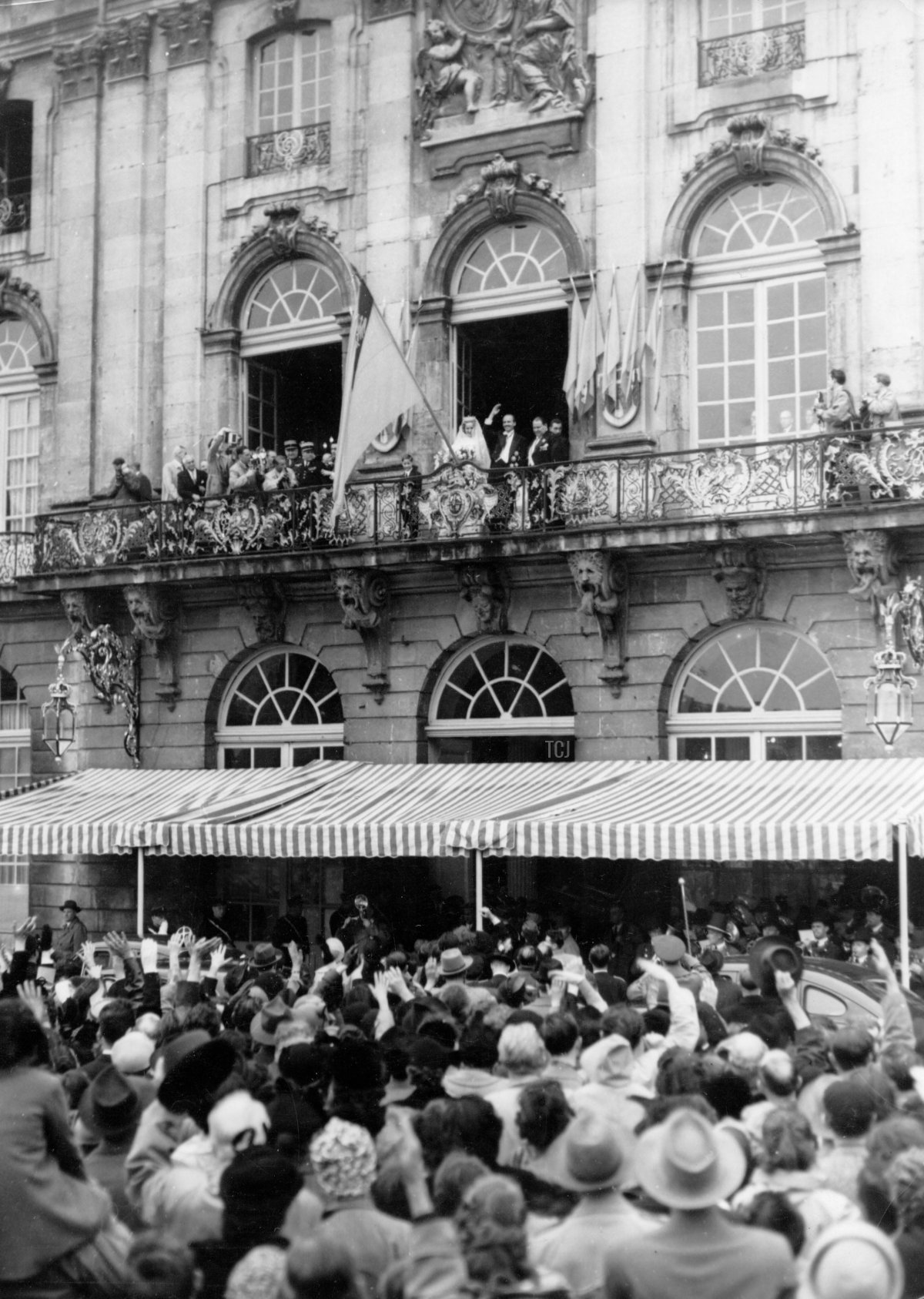
Seventy years ago today, a royal wedding was held in France that united an Austrian archduke and a German princess. For supporters of the Habsburgs, the nuptials united their exiled emperor with his empress. Here’s a closer look at the jewels worn by Regina of Saxe-Meiningen for her wedding to Otto von Habsburg.

Regina (1925-2010) was the daughter of the head of the house of Saxe-Meiningen, while Otto (1912-2011) was the eldest son of the last Austro-Hungarian monarch, Emperor Karl I, and his wife, Empress Zita. Otto and Regina met in 1949, after the war, when Regina was employed as a social worker at a relief home for Hungarian refugees in Munich. Otto came to the home for a visit with some his family’s former subjects. They fell in love, and their engagement was announced the following year. The wedding was scheduled for May 10, 1951. At the time, the exiled groom was not permitted to enter his native Austria, so the wedding had to be held elsewhere. The family chose the Church of Saint-François-des-Cordeliers in Nancy, the ancestral seat of the Dukes of Lorraine, another of Otto’s titles. (Inside the church, though, the kneelers used by the couples were reportedly dusted with earth brought from Austria, so they could technically be married on Austrian soil.) To satisfy the requirements of French law, a civil ceremony was held at city hall ahead of the religious wedding ceremony.
Ahead of the ceremonies, the couple posed in their nuptial attire for gathered press photographers. Regina’s dress was described by one International News Service reporter as “a white duchess satin gown with a train more than six yards in length.” The news report added that the bride wore “the traditional long lace veil embroidered with the coat of arms of the Habsburgs as well as the crest of her own family from Saxony.” The veil reportedly dated to the eighteenth century.

Regina’s wedding veil was topped by an important piece of imperial jewelry. She wore the same diamond tiara that Otto’s mother, Empress Zita, had worn on her wedding day in October 1911. The tiara was made by the Habsburg court jeweller, Köchert. The piece, which you can read more about here, features lacy scroll designs. Its base can be detached and worn separately.
Both the bride and groom also wore dynastic orders with their wedding clothes. Otto in particular had a haul worthy of an emperor—or at least a crown prince. Around his neck, he wore the Order of the Golden Fleece. He also wore the sash and star of the Order of Saint Stephen of Hungary, as well as the stars of the Order of Leopold and the Sovereign Military Order of Malta. Regina wore the badge of the Order of the Starry Cross, a Habsburg decoration for women. (Here, you can see a similar badge from the order. This one belonged to Empress Carlota of Mexico, the wife of a Habsburg archduke.)

Despite steady rain, crowds gathered around both the city hall and the church in Nancy on the couple’s wedding day. In particular, one report noted that “hundreds of Austrians clad in native costume cheered the couple through the streets.” The wedding day, that reporter mused, brought to mind “the spirit of pre-war Vienna.” Otto and Regina made an appearance on the city hall’s balcony, recognizing the good wishes from those gathered below. But not everyone in the crowd was sympathetic to the pretender’s cause. The Canadian press noted, “As the newlyweds left the church, several eggs splattered on the ground about 10 yards from them. They did not seem to notice, nor did they pay any attention when the egg-throwers, apparently students, shouted: ‘Long live the republic.'”
The republicans didn’t need to worry. Otto would not be restored to the defunct Austrian throne, though he would serve as a member of the European Parliament for two decades. He lived a very long life at the head of the House of Habsburg with Regina and their seven children. In 2001, the couple even returned to the church in Nancy to mark their golden wedding anniversary.
Leave a Reply
You must be logged in to post a comment.